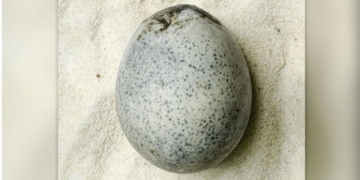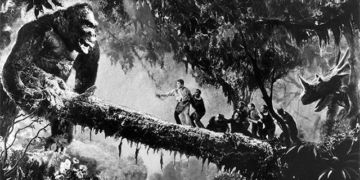It is the corpse of a gigantic sea creature in a state of decay, emitting a terrible odor.
Occasionally, strange and mysterious sea creatures wash up on our shores, causing fear and curiosity among beachgoers and the public. Many regard them as omens of unusual events or the beginnings of inspiring, terrifying stories about mythical sea monsters rising from the ocean depths.
Therefore, when a 6-meter-long, nearly 2-ton corpse appeared on the beach in Oriental Mindoro, Philippines in 2018, it sparked panic and rumors of an impending earthquake in the area. This marine corpse is referred to as a “Globster” – a term used to describe the gigantic remains of mysterious creatures found around the world.
But what exactly is a “Globster”? This term first emerged in 1962, referring to unidentified marine creatures.
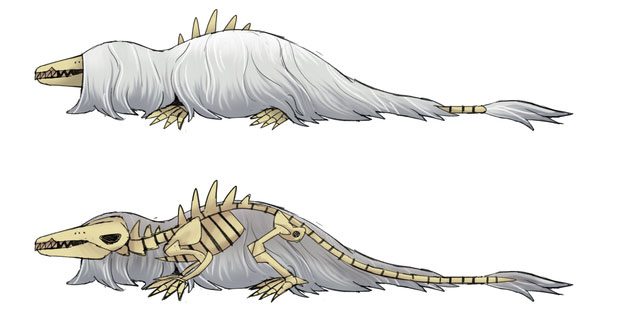
Residents of Oriental Mindoro in the Philippines were astonished by the appearance of a gigantic hairy monster in May 2018. Before experts could examine and identify its body, onlookers named the 6-meter-long creature “Globster”.
In 1960, a massive, mysterious creature washed ashore on a remote beach in Tasmania. It measured over 6 meters long, nearly 5.5 meters wide, more than 1.3 meters thick, and weighed about 10 tons. Lacking eyes, a head, and a distinct body shape, it resembled a terrifying, boneless creature, leaving everyone who saw it perplexed. According to the “The Mercury” magazine in 1962, this sea monster was as large as a house and covered in fine fur. It had several fleshy protrusions and strange hair-like fibers all over its body.
Ivan T. Sanderson (1911-1970), a British biologist from Scotland, was famous for his writings on cryptozoology (the study of unknown animal species) and mysteries. He coined the term “Globster” when referring to the monster found in Tasmania. Since then, any unidentified marine animal carcass that washes ashore has been considered a “globster”.
References to globsters date back to early 1896 with the St. Augustine monster in Florida. It washed up near St. Augustine and was believed to be a giant octopus. However, in reality, most globster remains are found in various stages of decomposition.
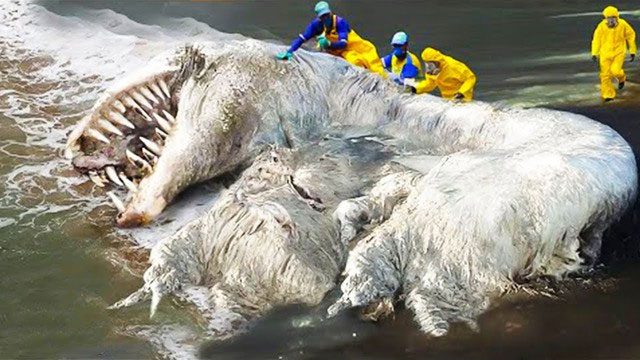
Numerous unidentified marine carcasses have washed ashore. (Illustrative image).
Over the years, there have been several famous unidentified marine carcasses that have captured global attention. The “Trunko” in 1924 was a massive white mass that drifted ashore in South Africa, inspiring the headline “Fish Like a Polar Bear”. Witnesses claimed they had seen the creature a few days earlier, fighting with orcas for hours before succumbing.
“Globster New Zealand” washed up on Muriwai Beach in 1968, measuring over 9 meters long and nearly 2.5 meters high. Mysterious carcasses also appeared twice in Bermuda, once in 1988 and again in 1997. The fisherman who discovered the “Bermuda Blob” in 1988 described it as having 5 outstretched limbs and resembling a deformed starfish.
Additionally, there was the “Nantucket Blob” in 1996, the “Four Mile Globster” in 1997, and the “Chilean Blob” discovered in 2003. In fact, in February 2017, a similar “hairy” globster washed ashore on Dinagat Island in the Philippines, leading to widespread stories of dead monsters from the depths of the ocean!
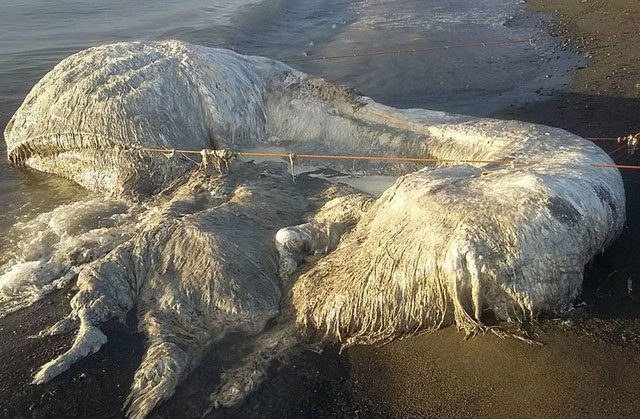
In modern times, DNA technology has allowed scientists to clearly identify what these globsters are. (Illustrative image).
In contemporary times, advanced DNA technology has shed light on the “dreams” of cryptozoologists and their fascination with sea monsters that may not exist. Today, most globster species have been scientifically identified.
The ocean can affect animal remains in countless ways, with some parts decomposing faster than others. According to Lucy Babey, head of science and conservation at the Orca animal charity, the 6-meter-long globster found in the Philippines is likely the remains of a whale that died in a later stage of decomposition. Storm surges or earthquakes may have swept the animal’s remains ashore.
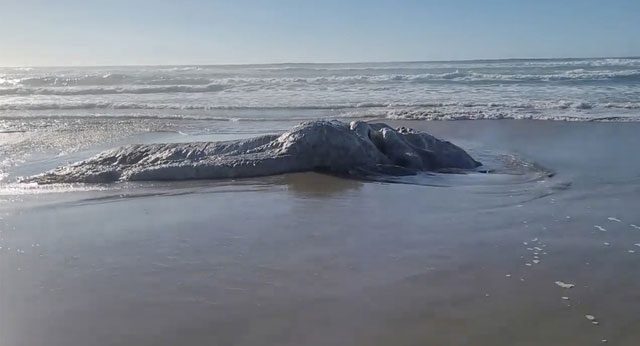
Scientists explain that these mysterious sea creatures are actually the remains of a whale, and the hair-like fibers covering them are likely decomposing muscle strands.
Later on, scientists identified the “Tasmanian Globster” as whale collagen. Nicholas Higgs, deputy director of the Marine Institute at the University of Plymouth, confirmed that in all “hairy” globsters, the “hair-like” fibers are actually remnants of whale muscle and fat, with the connective tissue between them often very tough, giving them a frayed appearance similar to hair.
“Globsters,” a term often associated with the mystery and thrill of the unknown, have somewhat lost their allure today due to revelations that they are primarily decomposing dead whales.



















































